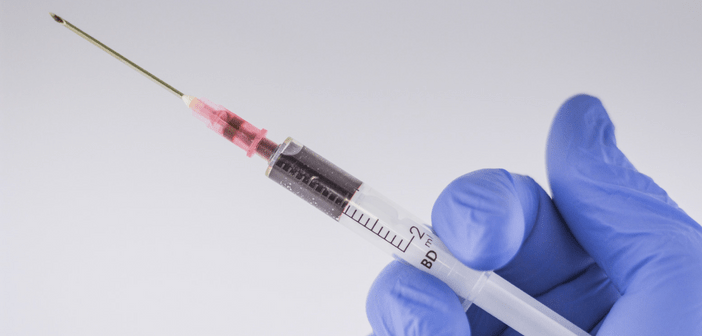New nanoplasmonic biosensor could monitor anticoagulant treatments

Researchers at the Consejo Superior de Investigaciones Científicas (Madrid, Spain), the Catalan Institute of Nanoscience and Nanotechnology (Barcelona, Spain) and CIBER Bioengineering, Biomaterials and Nanomedicine (Madrid, Spain) have developed a new biosensor device based on gold nanostructures to monitor the presence of anticoagulants such as Sintrom® (acenocoumarol) from blood samples.
Issues currently facing treatment with anticoagulants are risk factors associated with dose calculations, as the researchers explained: “If the dose is too low, it would not achieve the expected effect and blood clotting may occur. On the other hand, if the dose is too high, it could cause side effects such as internal bleeding. The right dose depends on many factors such as weight, age, diet and interaction with other medications.”
This new biosensor has the potential to be implemented as a point-of-care device in decentralized settings, offering patients personalized therapy with tailored drug doses in order to optimize their treatment.
The device, designed by Laura Lechuga (Consejo Superior de Investigaciones Científicas) and her team, consists of gold nanostructures able to bind specific bioreceptors from the blood. This allows direct quantification of biomarkers in real time, from relatively small sample volumes, that can be accurately reproduced.
The specific antibodies capable of recognizing acenocoumarol were developed by Pilar Marco (Consejo Superior de Investigaciones Científicas) and his team, and have shown efficacy in a previous clinical study using an immunoanalytical technique with high sample throughput.
Lechuga commented: “We have studied the optimal conditions to develop this biosensor device and have obtained excellent sensitivity to detect the anticoagulant, which indicates that it is possible to measure very low concentrations of this drug.”
Overall, the new device has shown high sensitivity and accuracy at measuring blind plasma samples, making it well suited for use in clinical settings in the future. This could allow for personalized dose adjustment of anticoagulant medication so that physicians can optimize treatment for patients, such as those suffering from thromboembolic disorders or cardiovascular disease.
Sources: Peláezab C, Estevezab C, Portelaab A et al. Nanoplasmonic biosensor device for the monitoring of acenocoumarol therapeutic drug in plasma. Biosens. Bioelectron. 19, 149–155 (2018); www.eurekalert.org/pub_releases/2018-11/snrc-ndc112618.php





